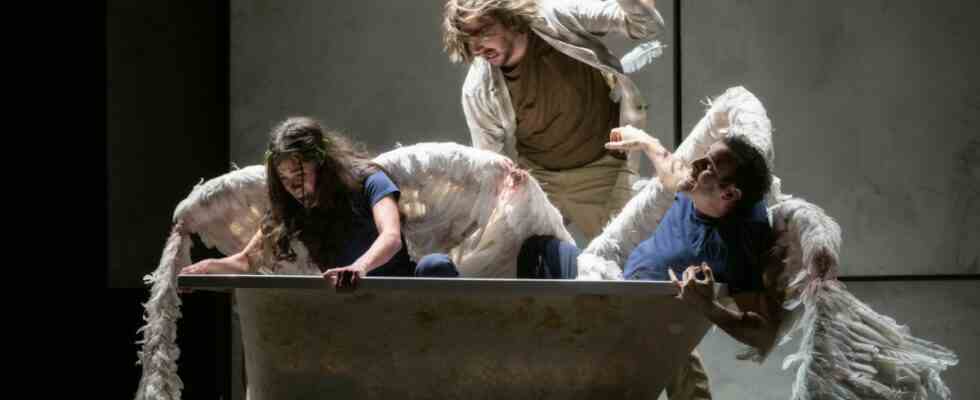There were two premieres of contemporary music theater over the weekend at the Augsburg State Theater: the moving, intimate monoopera “The Diary of Anne Frank” by Grigori Frid on the Brechtbühne in a production by Nora Bussenius with Olena Sloia; the next day the European premiere of the opera “Angel’s Bone” by the American/Chinese composer Du Yun on the main stage in Martini Park. It premiered in New York in 2016, won the Pulitzer Prize and has already been released on CD.
Whether madrigal choirs of angels sung by black-robed men and women, trombones of the Last Judgment, hasty speeches over electronic waves, lonely violin or clarinet solos, even downright punk rock: the 45-year-old composer is not afraid to adopt many idioms to put the events in the right musical light, which the Augsburg Philharmonic under Ivan Demidov vividly illuminate.
About the plot: a quarreling couple finds angels that have fallen from heaven. But instead of helping them and healing their bruised, bruised, bloody wings, the woman (Luise von Garnier) forces her husband (Wiard Witholt) to pluck the remaining feathers from the female and male angels and cut off their wings. From then on, the two beings who give divine blessings are praised and sold in their community and on TV, “Girl Angel” (very intense and touching: Alma Naidu as a guest) hardly escapes being raped and “Boy Angel” (Claudio Zazzaro copes with it high tenor tessitura is amazing and plays his despair brilliantly) is brutally coerced again and again.
In the end, Mr. XE, conscious of his guilt, torments himself to death with one of the angel feathers which he kept in a large trunk and which he intended to give back to the angels; the two angels manage to escape and Mrs. XE, the Lady Macbeth in this story, laments on a television talk show that she didn’t want to be famous after all.
Antje Schupp (director), Christopher Ruder (stage) and Mona Hapke (costumes) have put together a gripping production in the original English: on stage, thanks to the characteristic outlines, you can imagine a winged altar or organ case, and in fact you can see more and more of the mighty Isenheim altar, sometimes the crucifixion, sometimes the incarnation of God, i.e. the crib. Once the angels have been desecrated, only the skeleton and fluorescent tubes remain on the revolving stage (stage: Christopher Rufer).
But that’s where it all really starts: The two angels, on whose backs there are gaping bloody wounds where their wings once grew, become objects of desire that can be bought. The evening always becomes musically strong when it accompanies the events particularly hard or, conversely, the focus is on the very soft tones, for example when the archangel (a fine countertenor: Constantin Zimmermann) and a twelve-part “vocal circle” and/or the opera choir of the Staatstheaters Augsburg represent the diverse, supernatural or very real earthly collectives.

